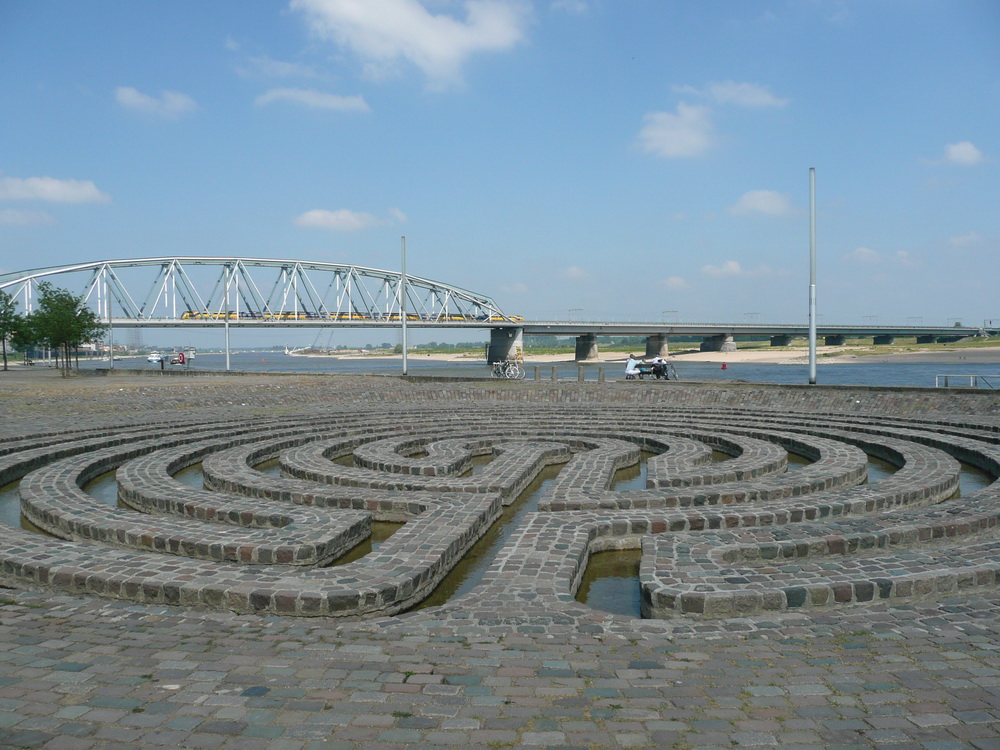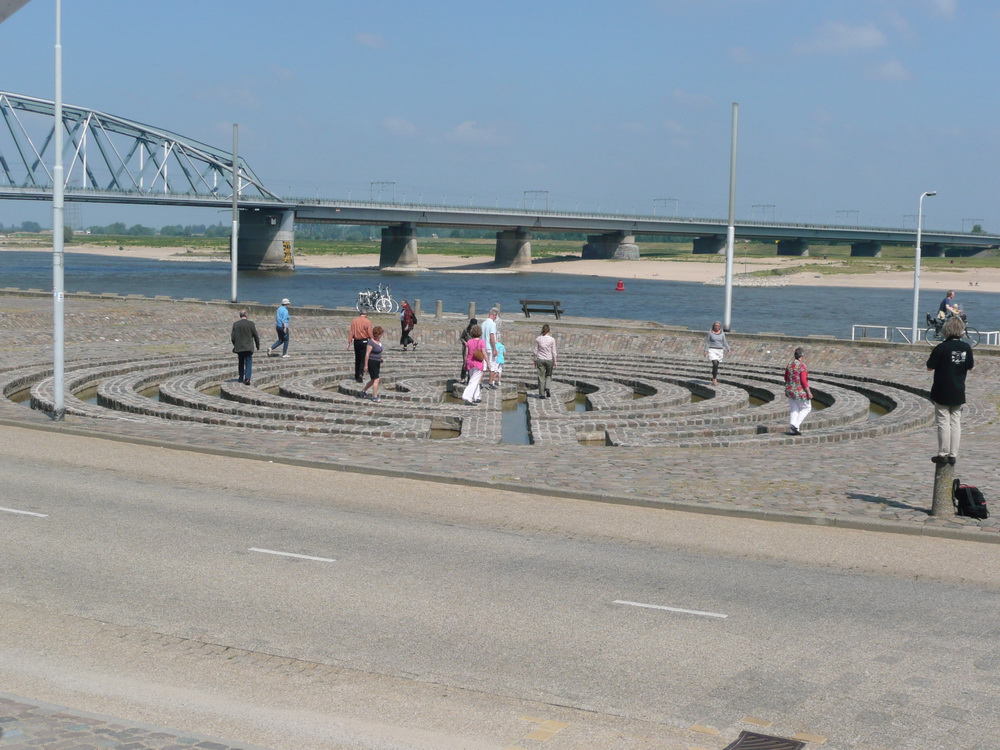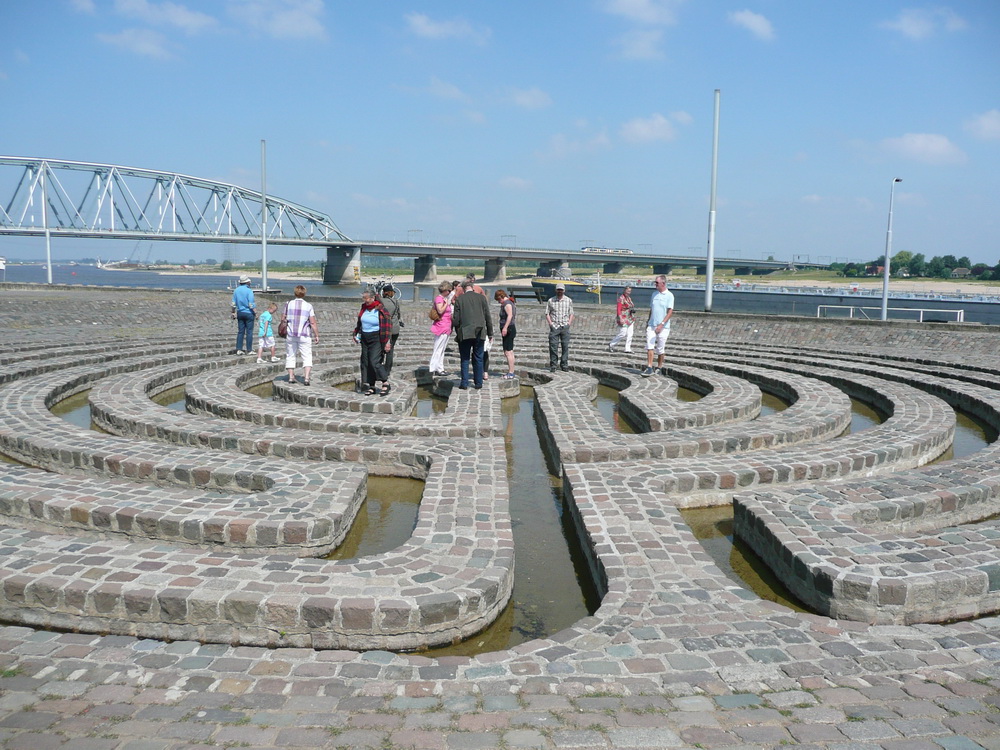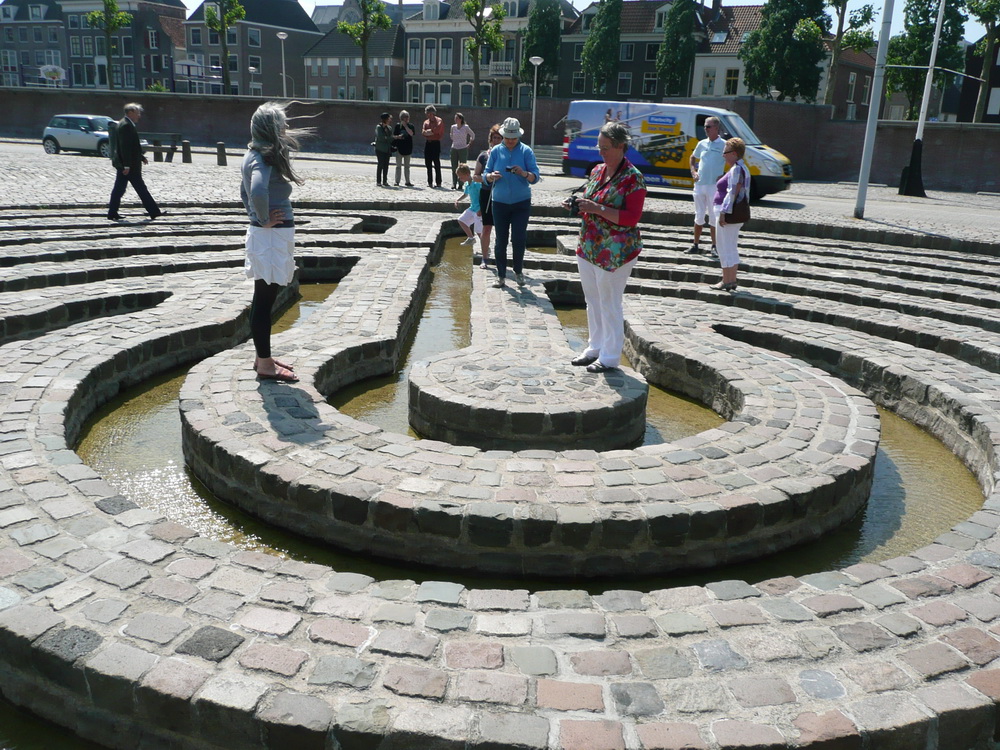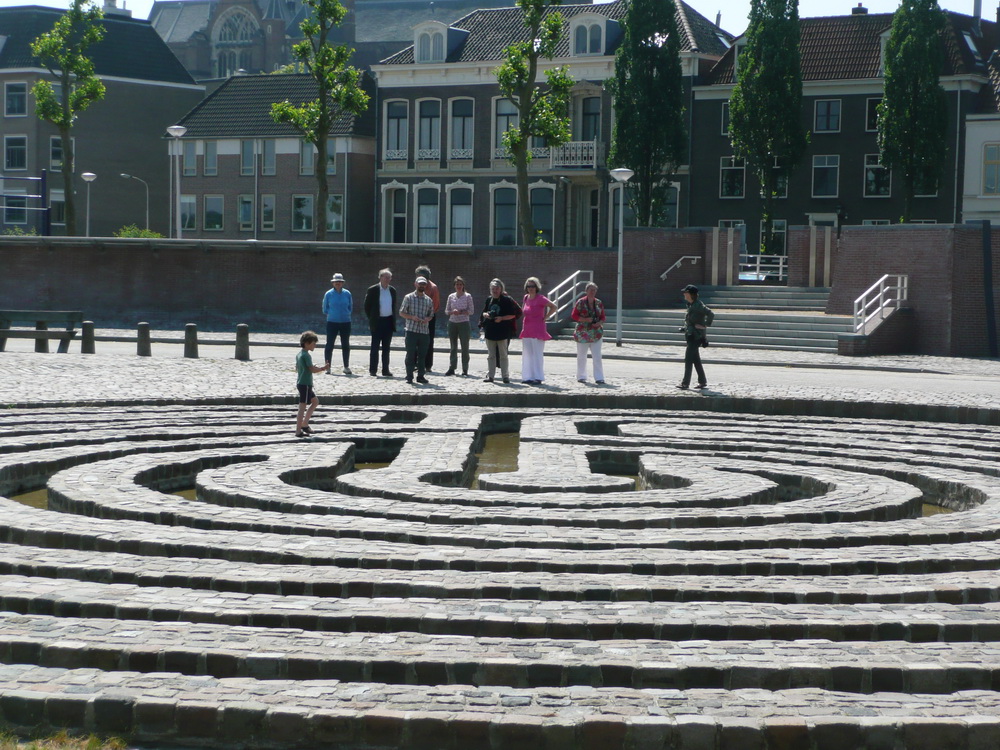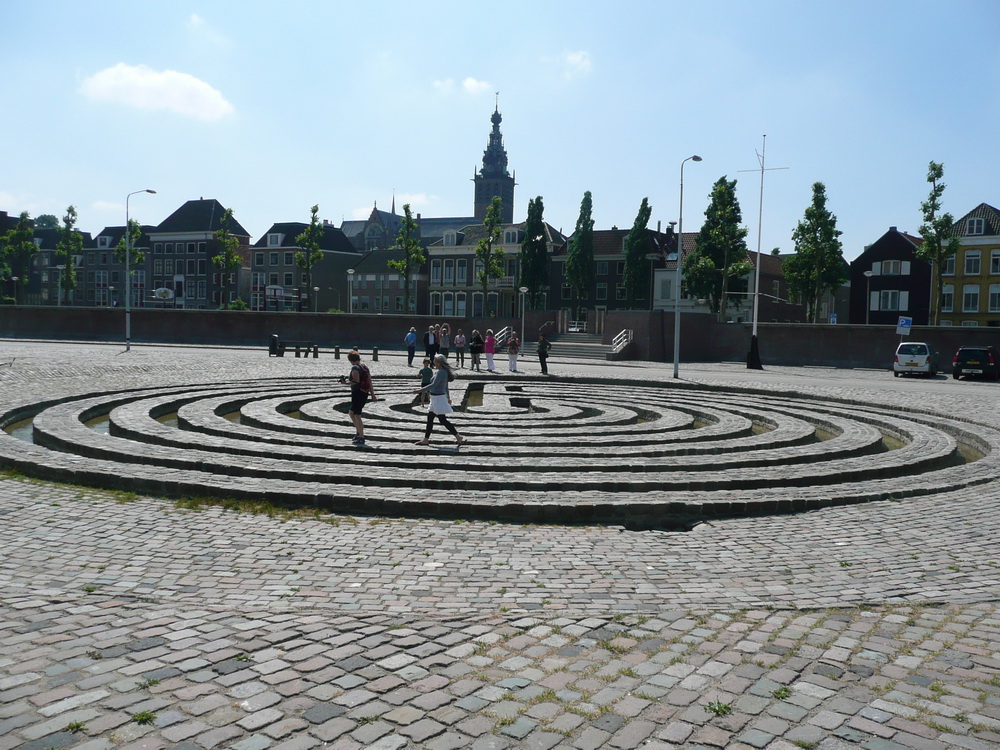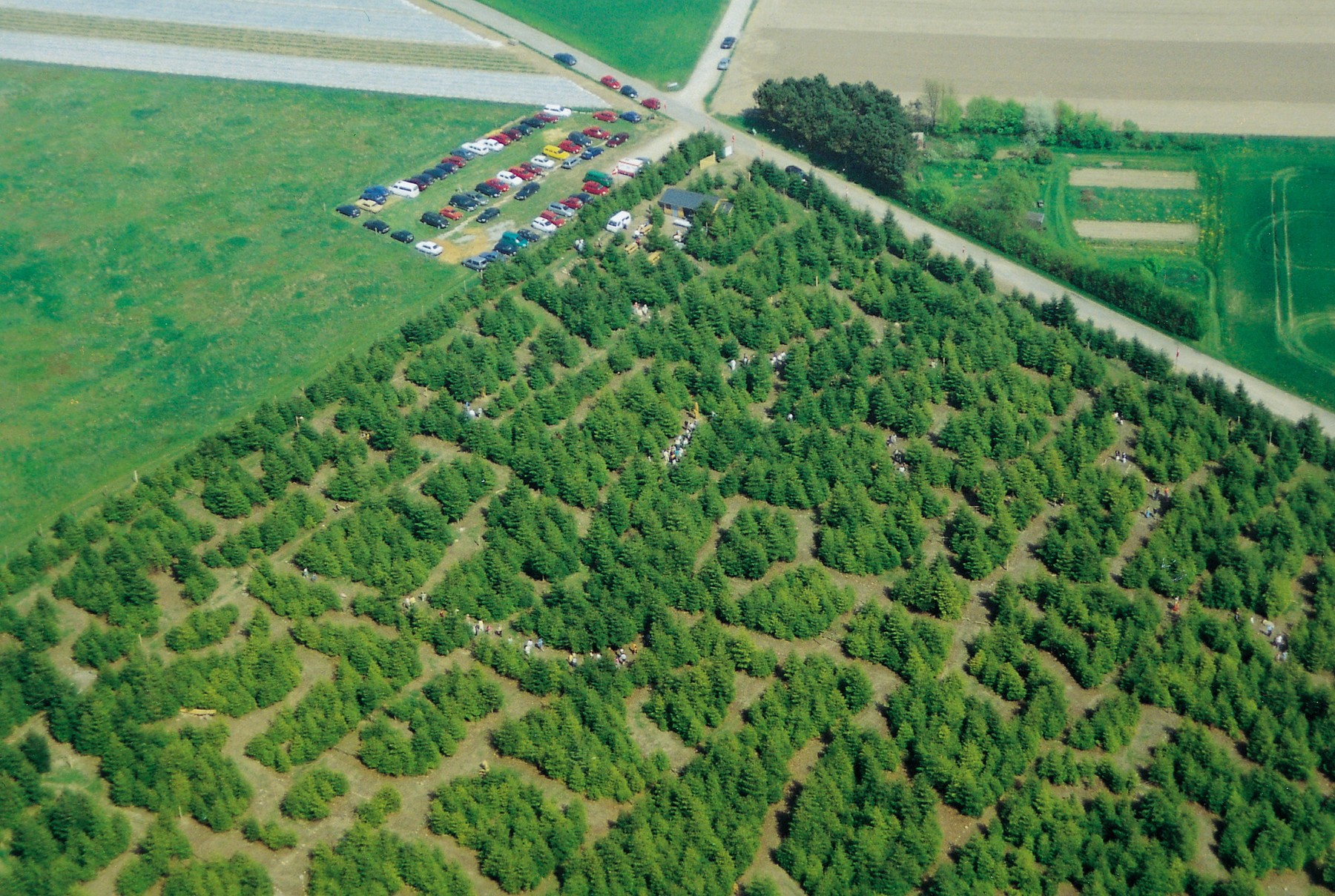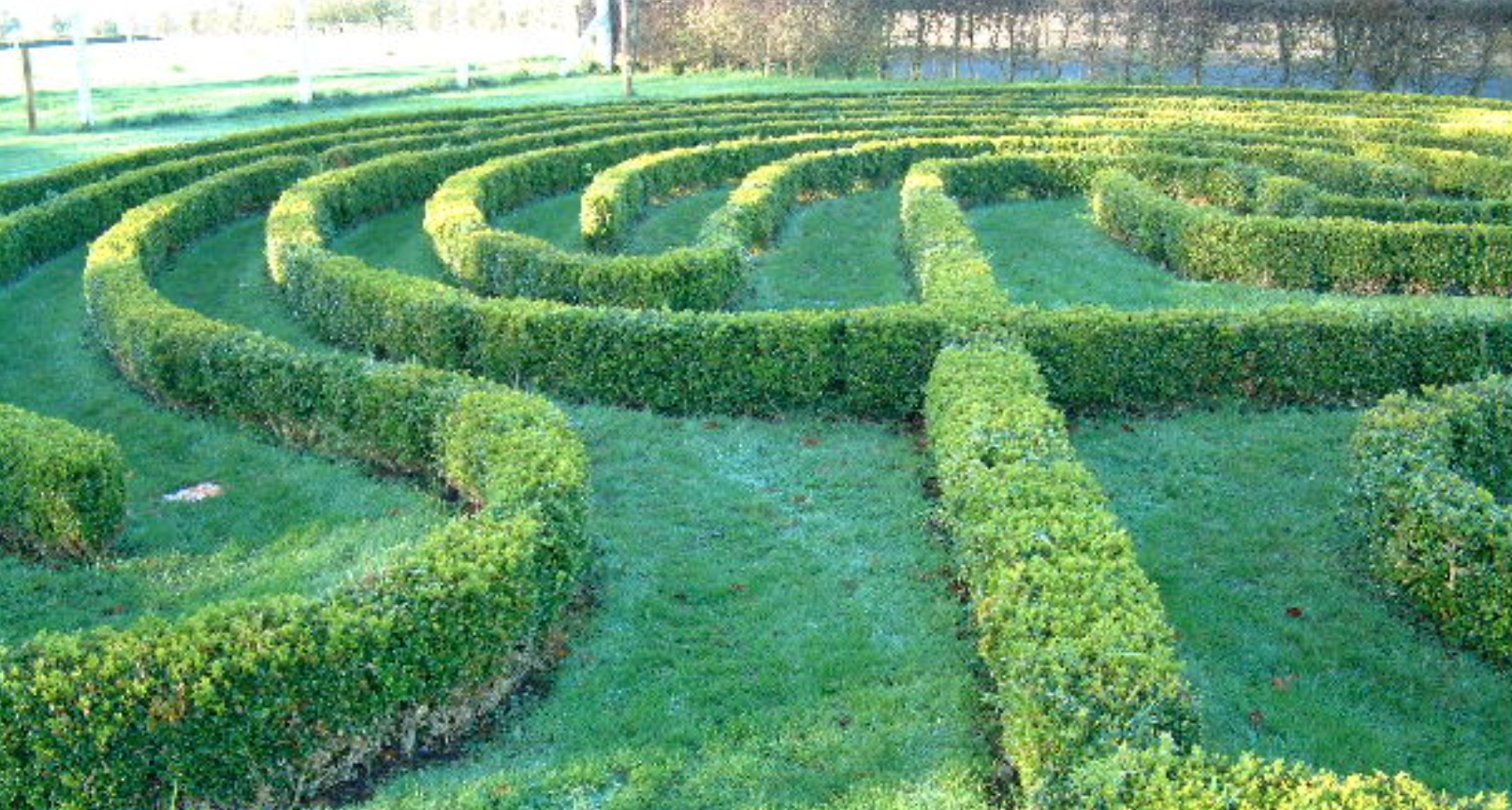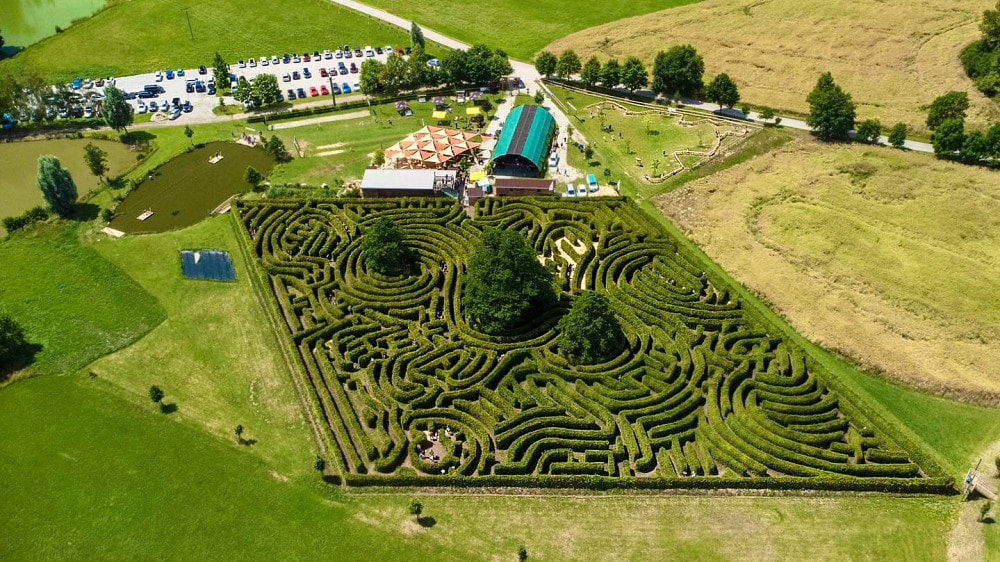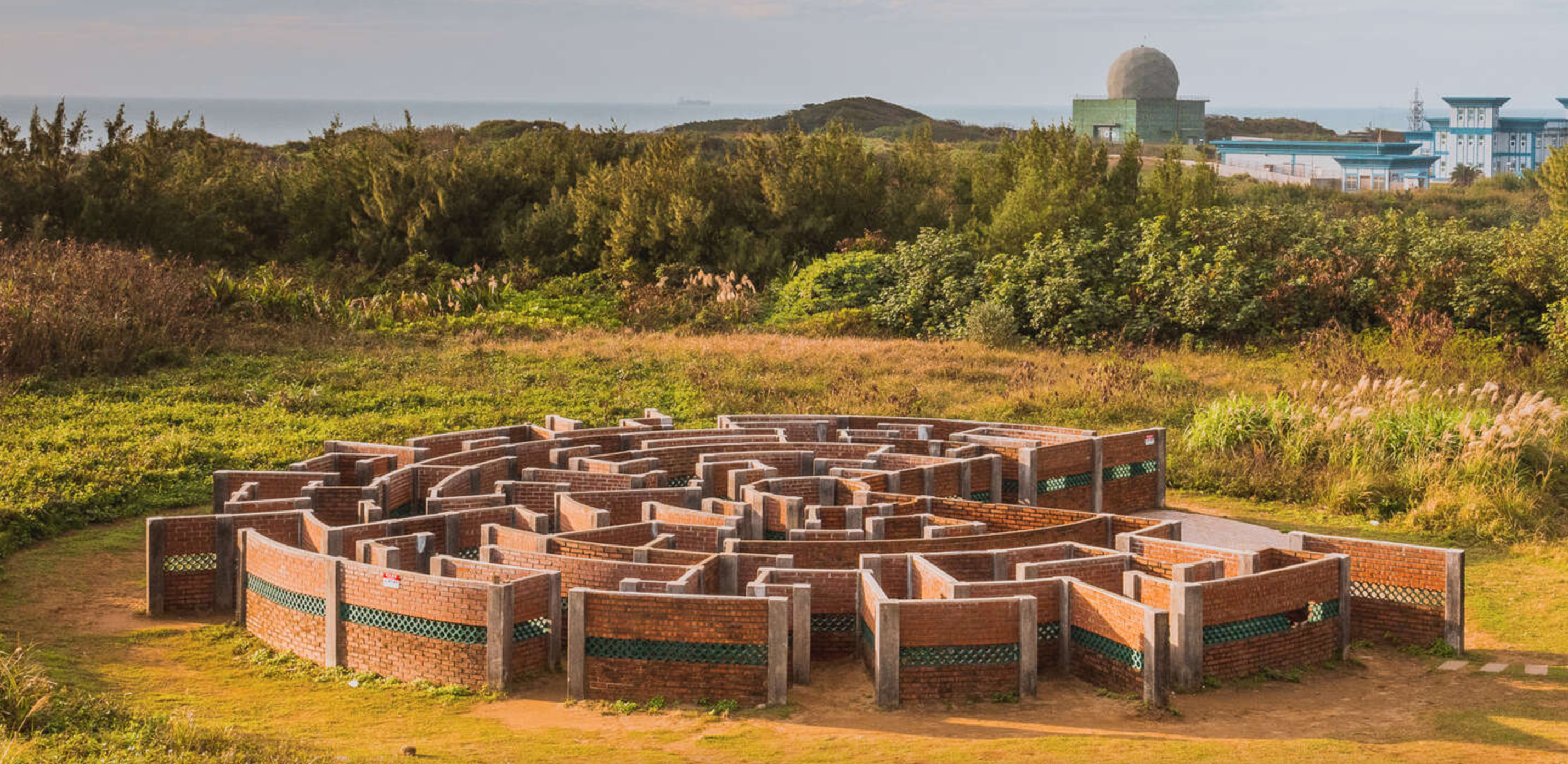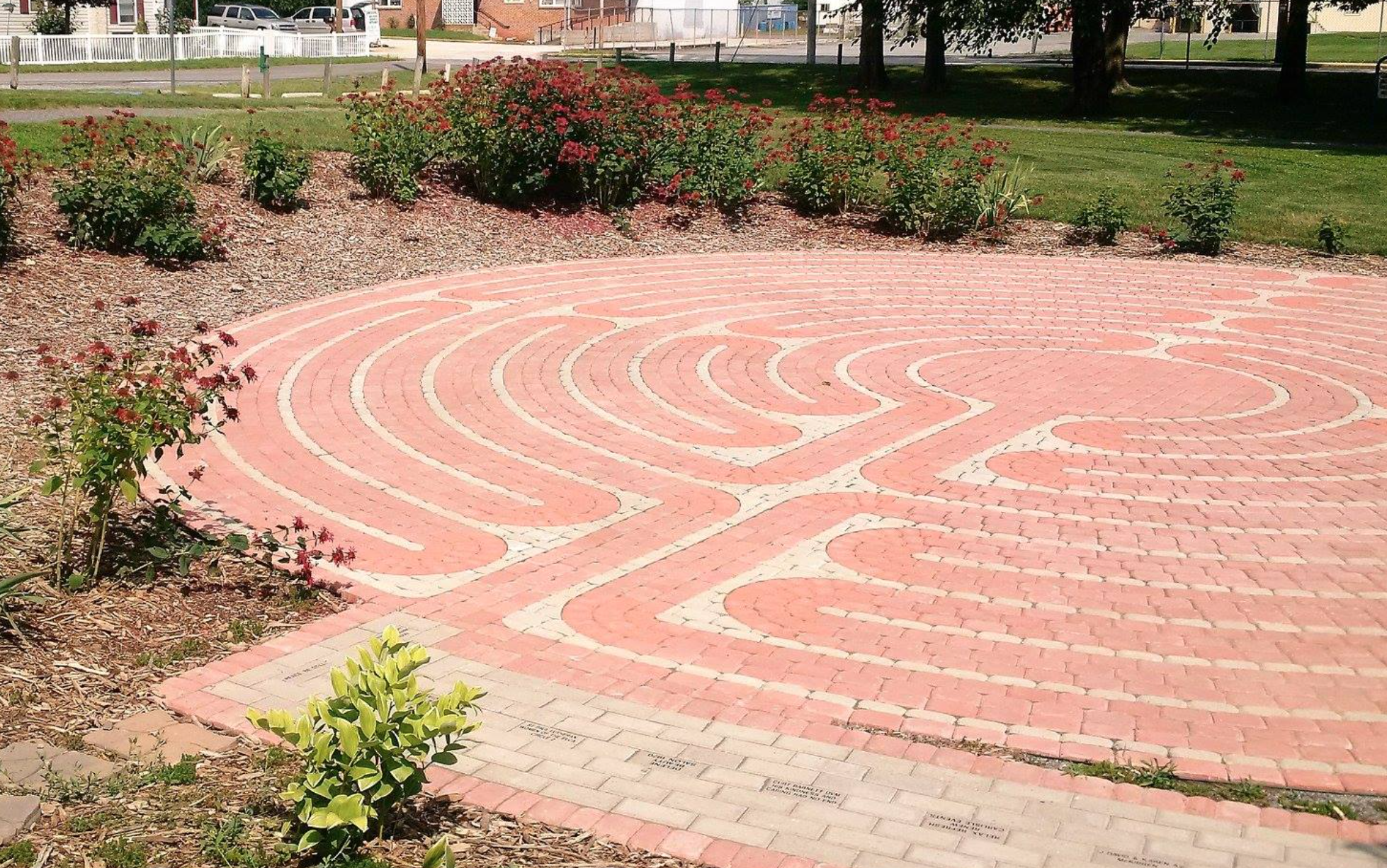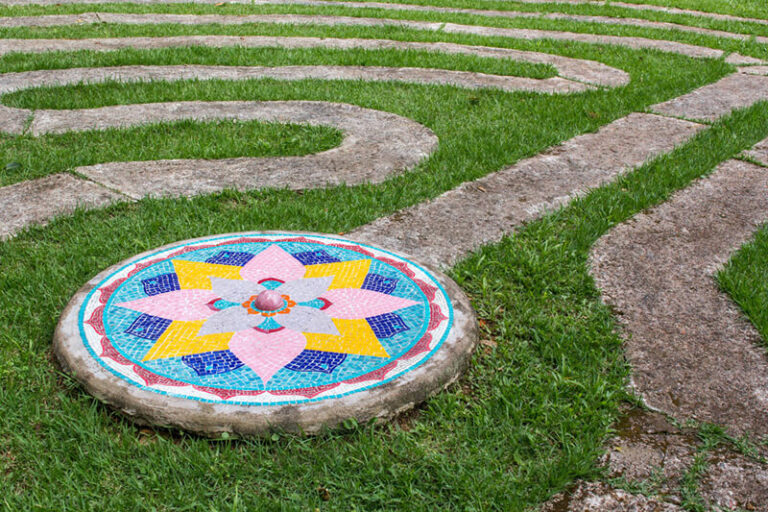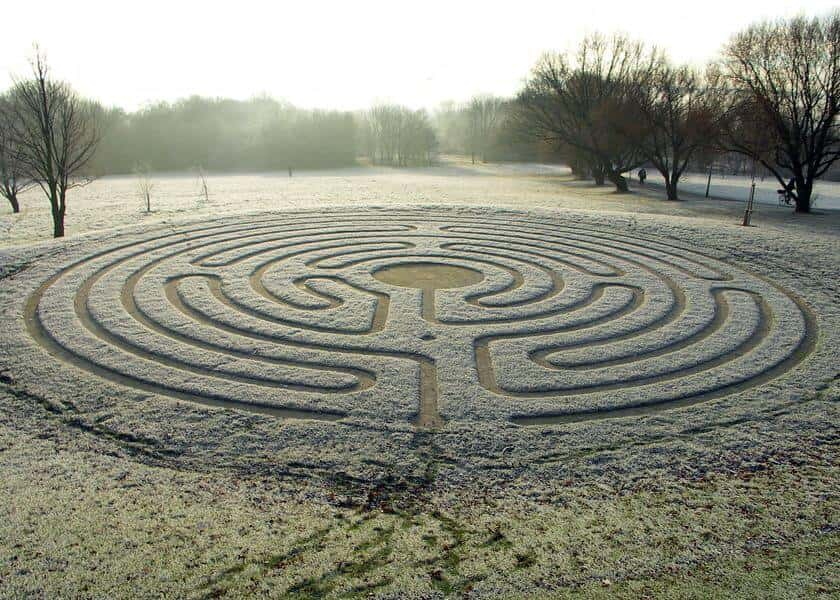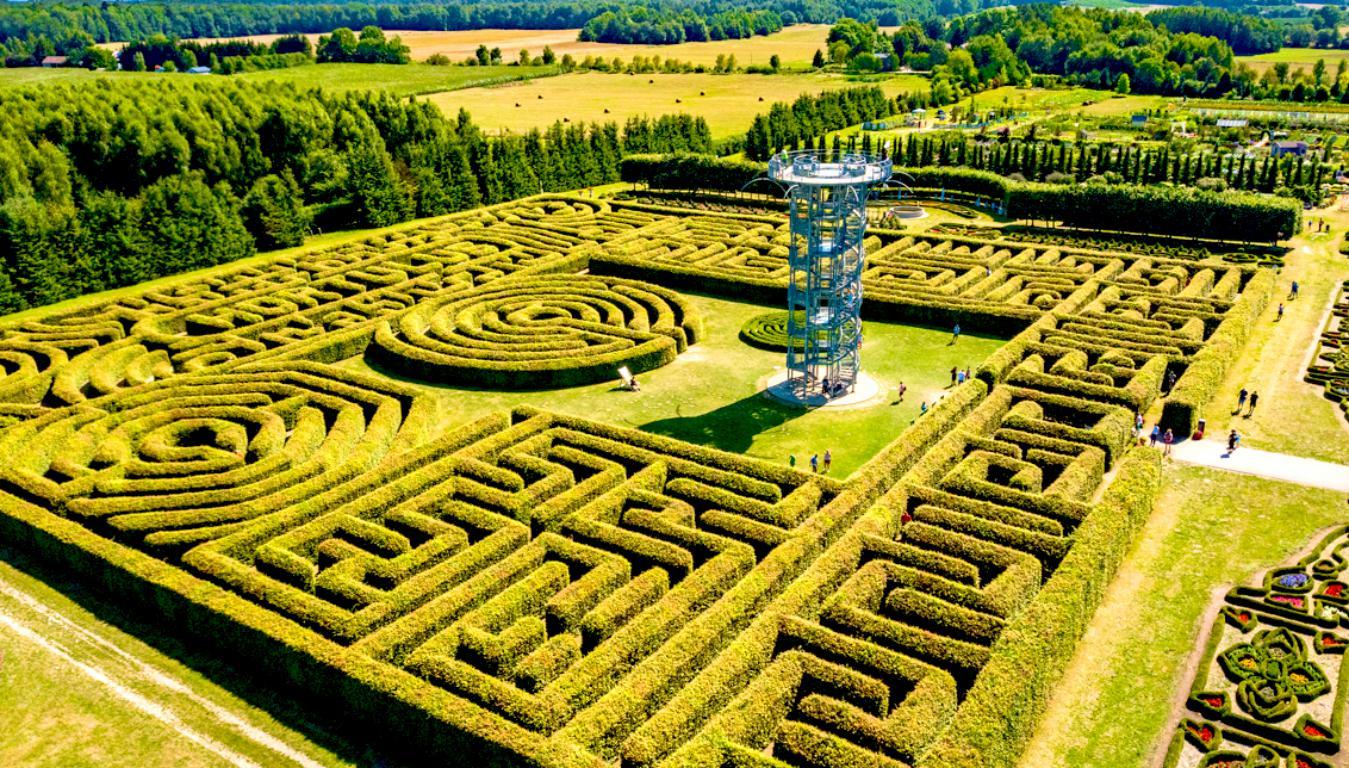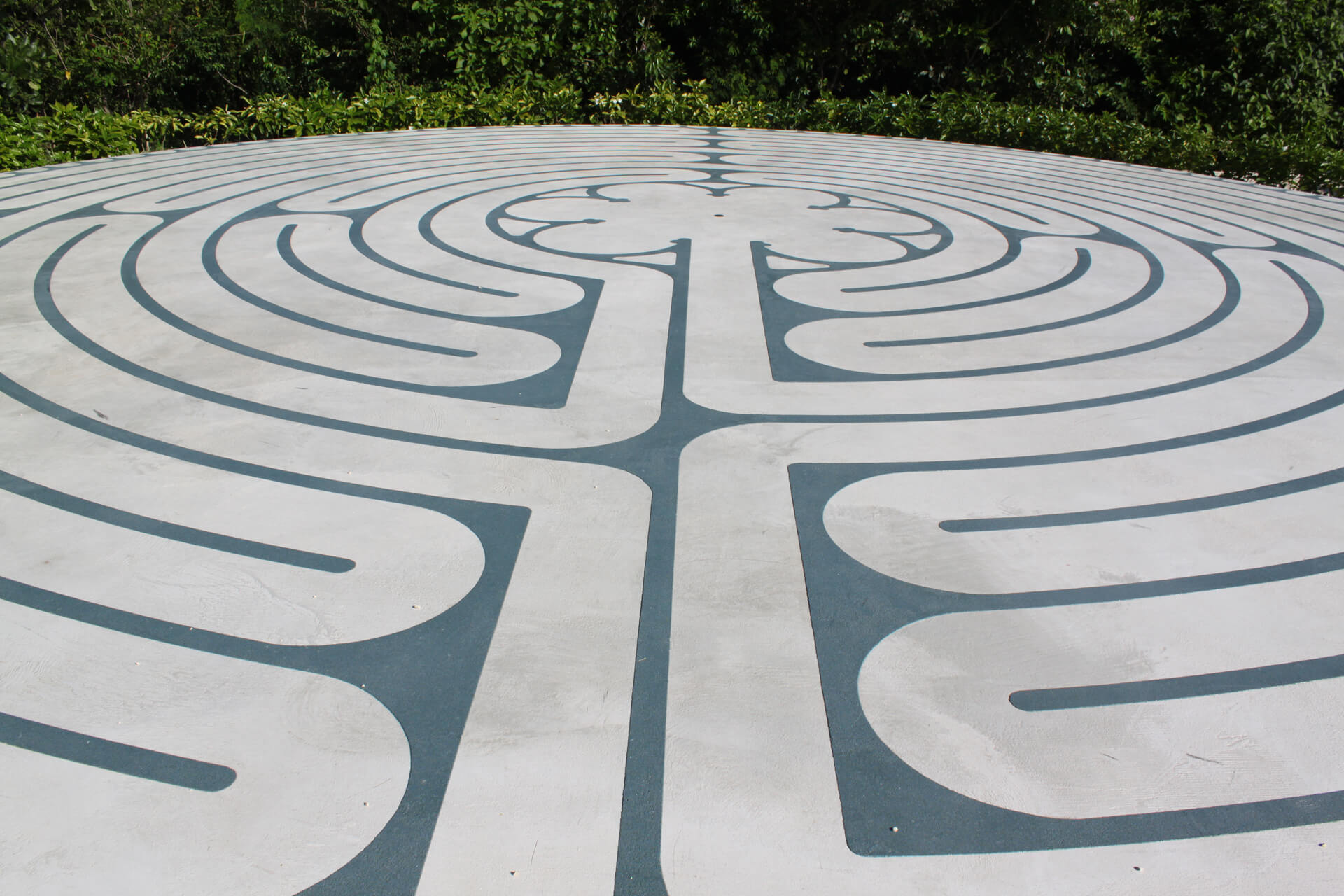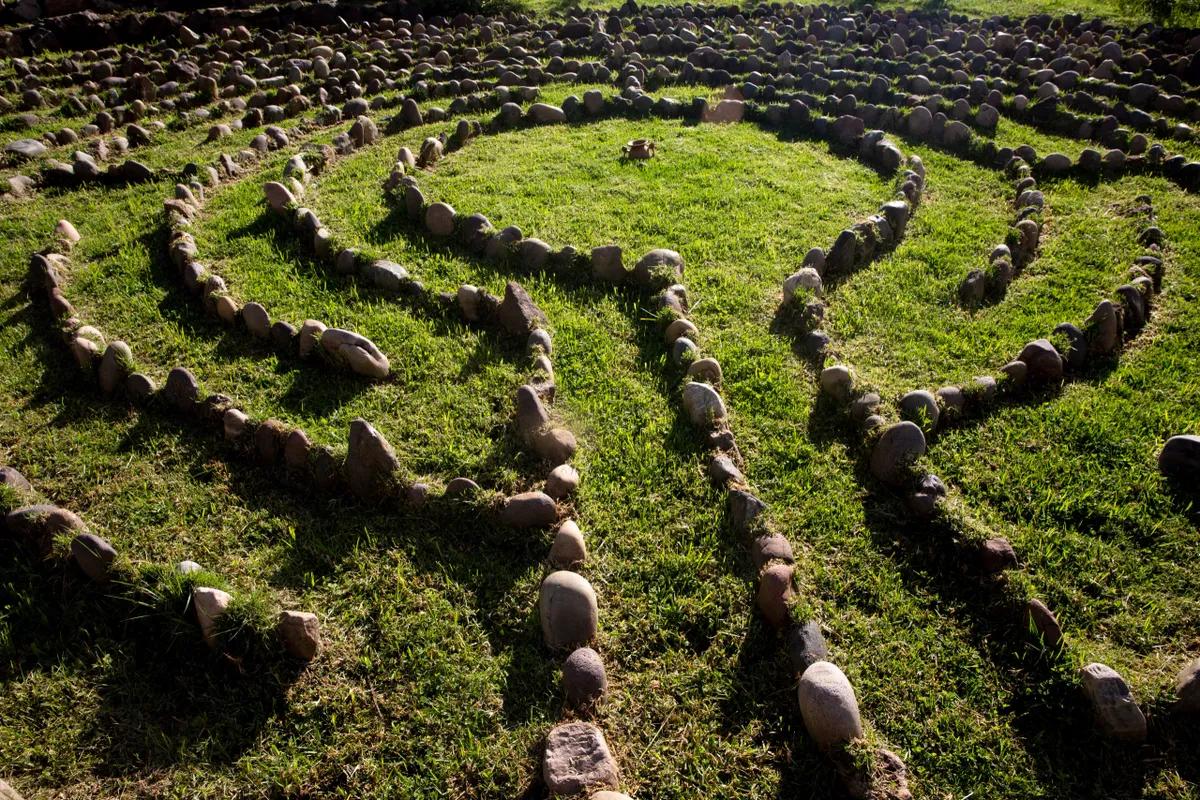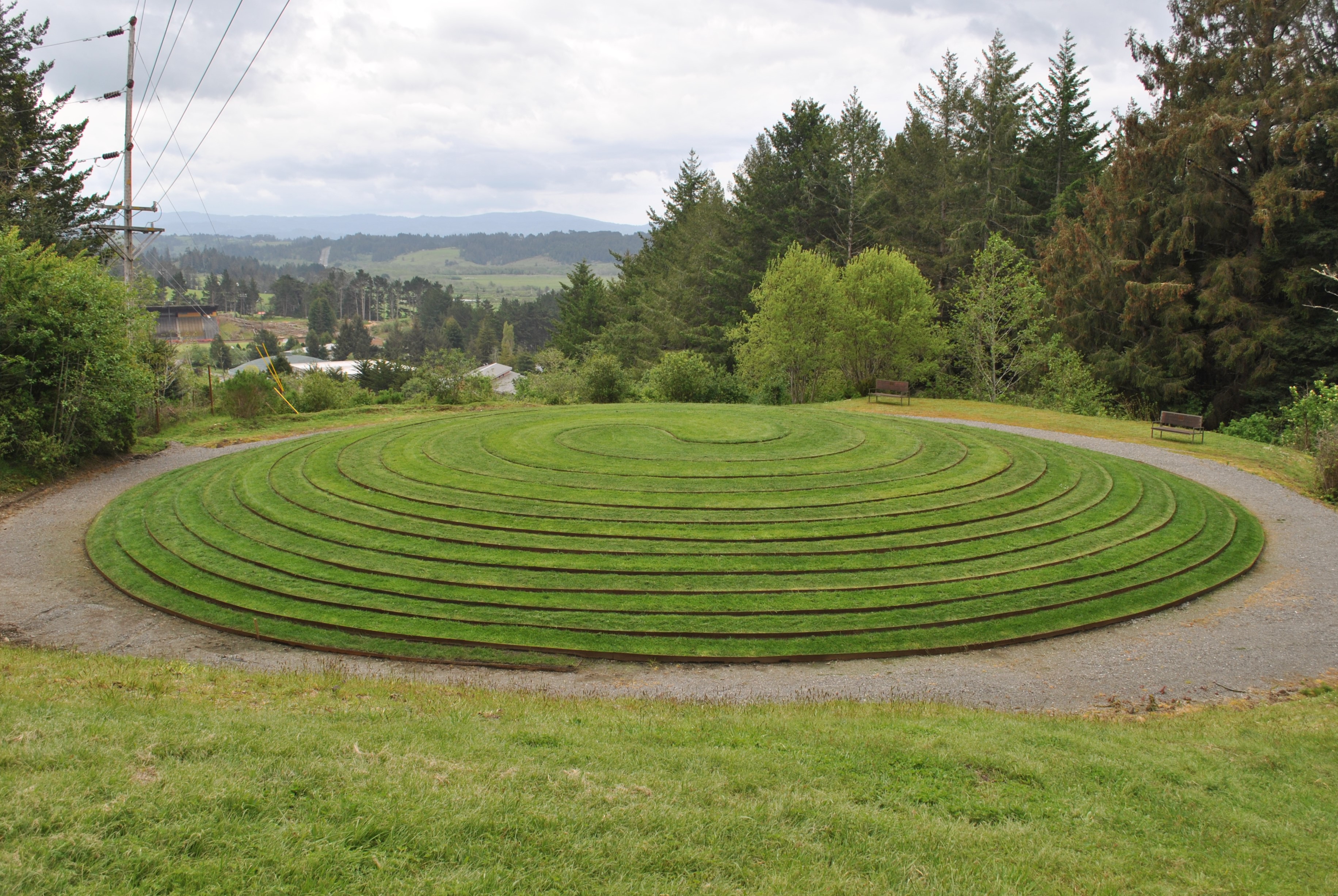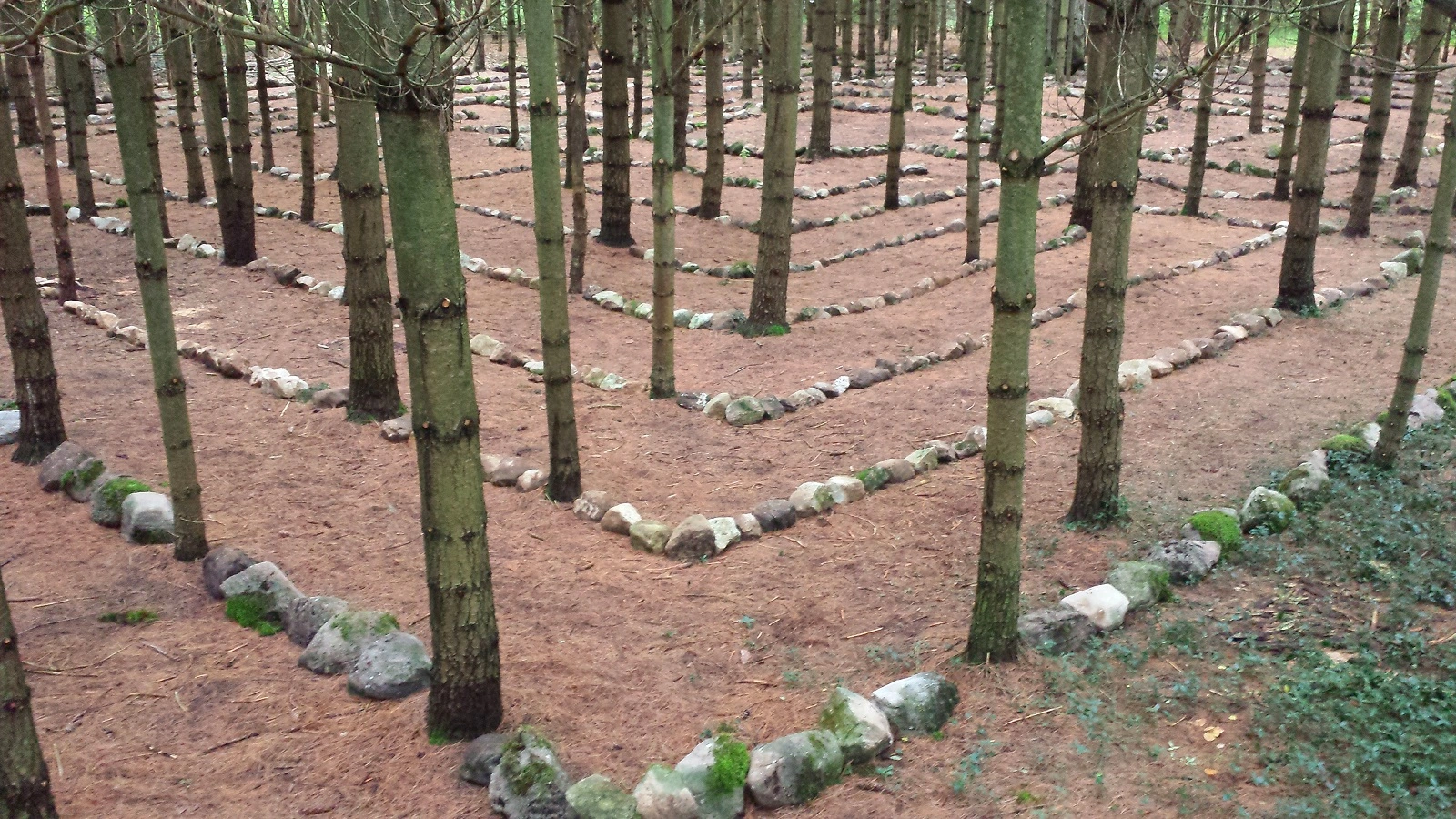Water Labyrinth at Nijmegen
Constructed in 1981 by the German artist Klaus van de Locht (1942 – 2003) along the river Waal when the area of the old harbour was rebuilt. The labyrinth is a seven circuit classical labyrinth. The way is built of quarry stones and small water channels form the limitation.
In the words of the author:
"The spiritual and physical participation of the visitors is a necessary part of this sculpture, the interaction of work and receiver is the aim. This sculptural structure wants to be used, walked, climbed, be felt, … in the true sense of the word wants to be lived."
-- Klaus van de Locht
About Nijmegen [Wikipedia]:
It is the largest city in the Dutch province of Gelderland and the tenth largest of the Netherlands as a whole. Located on the Waal River close to the German border, Nijmegen is one of the oldest cities in the Netherlands and the first to be recognized as such in Roman times. In 2005, it celebrated 2,000 years of existence.
Nijmegen became a free imperial city in 1230 and in 1402 a Hanseatic city. Since 1923 it has been a university city with the opening of a Catholic institution now known as the Radboud University Nijmegen. The city is well known for the annual International Four Days Marches Nijmegen event.
Population (2023): 182,465.
Source
Working Hours
Daily
Admission
Free
Address
6511 WT Nijmegen
Netherlands
Website
